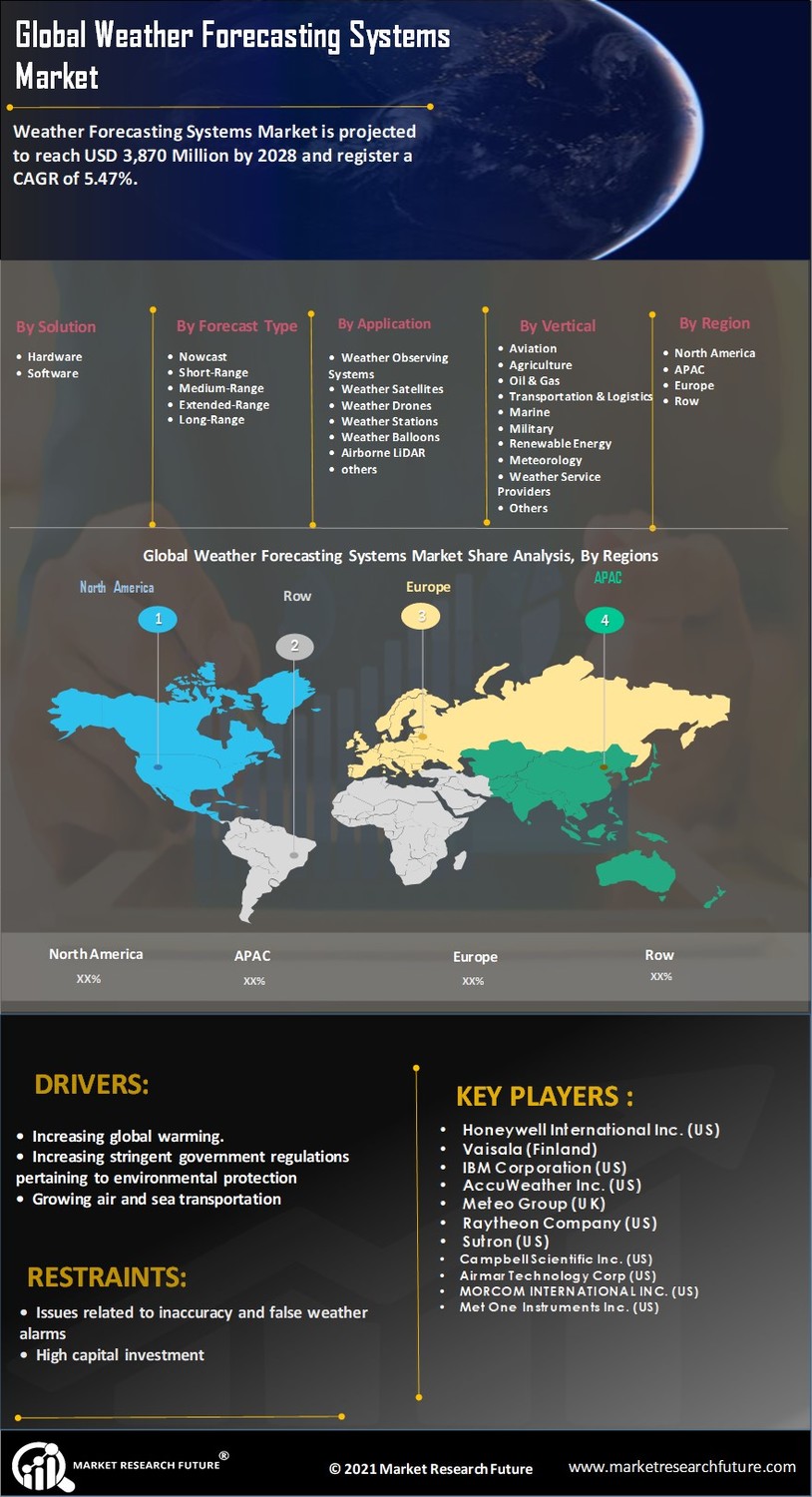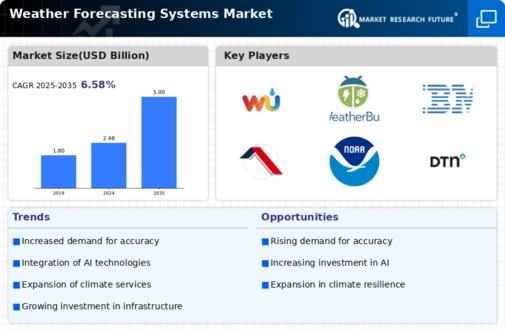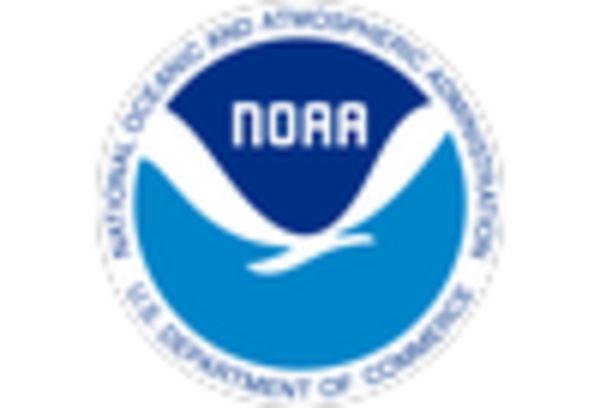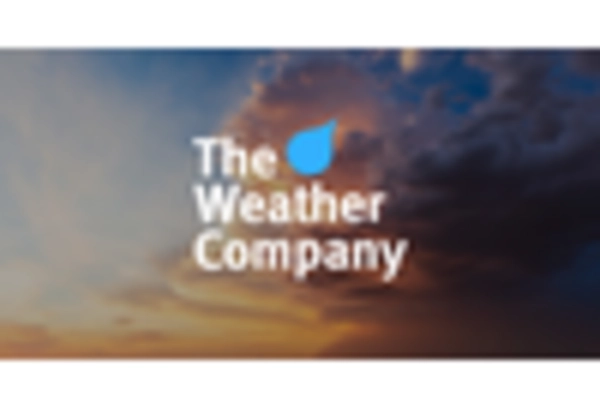Advancements in Technology
The Weather Forecasting Systems Market is experiencing a notable transformation due to rapid advancements in technology. Innovations in satellite imaging, radar systems, and data analytics are enhancing the accuracy and reliability of weather predictions. For instance, the integration of high-resolution satellite data allows meteorologists to monitor weather patterns with unprecedented precision. Furthermore, the adoption of machine learning algorithms is streamlining data processing, enabling quicker and more accurate forecasts. As a result, the market is projected to grow significantly, with estimates suggesting a compound annual growth rate of over 10% in the coming years. This technological evolution not only improves forecasting capabilities but also enhances the overall efficiency of weather-related services, making it a pivotal driver in the Weather Forecasting Systems Market.
Government Initiatives and Funding
Government initiatives and funding play a crucial role in the expansion of the Weather Forecasting Systems Market. Many governments are investing in advanced meteorological technologies to enhance public safety and preparedness for extreme weather events. For instance, funding for research and development in weather forecasting technologies has increased, leading to the establishment of more sophisticated forecasting systems. This trend is evident in various countries, where national meteorological services are being upgraded to provide better data and services. Such investments not only improve forecasting accuracy but also foster collaboration between public and private sectors, thereby driving innovation in the Weather Forecasting Systems Market. As a result, the market is likely to witness sustained growth due to these supportive governmental actions.
Rising Awareness of Climate Change
The rising awareness of climate change is significantly influencing the Weather Forecasting Systems Market. As climate-related events become more frequent and severe, there is an increasing demand for accurate weather forecasting to mitigate risks associated with these changes. Organizations and governments are seeking advanced forecasting systems to better understand and predict climate patterns, which is essential for effective planning and response strategies. Market data suggests that investments in climate-focused weather forecasting technologies are expected to increase by around 20% in the next few years. This heightened focus on climate change adaptation and mitigation strategies is driving the development and deployment of innovative weather forecasting solutions, thereby propelling growth in the Weather Forecasting Systems Market.
Growth of Smart Cities and IoT Integration
The growth of smart cities and the integration of Internet of Things (IoT) technologies are emerging as vital drivers in the Weather Forecasting Systems Market. As urban areas evolve into smart cities, the demand for real-time weather data becomes increasingly critical for urban planning and management. IoT devices, such as sensors and connected weather stations, are being deployed to collect and transmit weather data instantaneously. This integration allows for more localized and accurate weather forecasts, which are essential for managing urban infrastructure and public safety. Market projections indicate that the adoption of IoT in weather forecasting is likely to increase by approximately 25% over the next few years. Consequently, the convergence of smart city initiatives and weather forecasting technologies is fostering innovation and growth within the Weather Forecasting Systems Market.
Increasing Demand for Accurate Weather Predictions
The demand for accurate weather predictions is surging, driven by various sectors such as agriculture, aviation, and disaster management. In the Weather Forecasting Systems Market, businesses and governments are increasingly relying on precise forecasts to make informed decisions. For example, farmers utilize weather data to optimize planting and harvesting schedules, while airlines depend on accurate forecasts to ensure flight safety and efficiency. This growing reliance on weather information is reflected in market data, indicating that the demand for advanced forecasting systems is expected to rise by approximately 15% over the next five years. Consequently, the need for reliable weather forecasting solutions is a significant driver of growth within the Weather Forecasting Systems Market.


















Leave a Comment